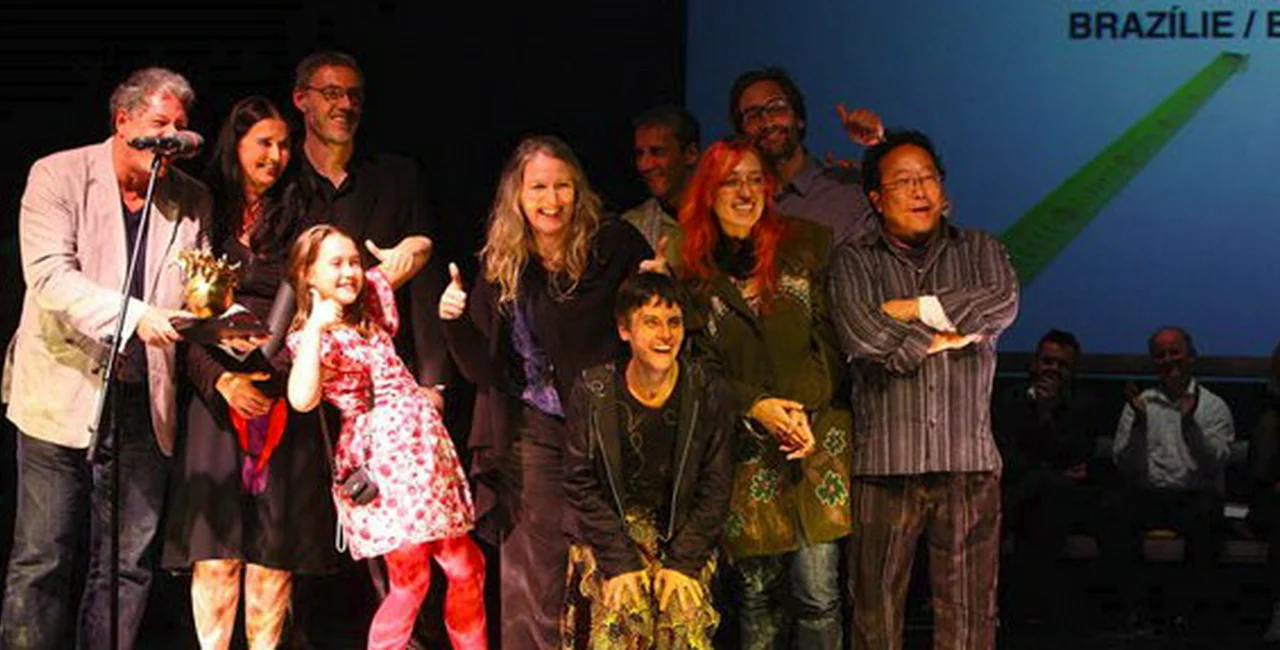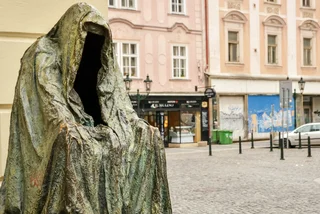The Prague Quadrennial´s Golden Triga goes to Brazil for a sensitive combination of scenography and popular culture
.
The winners of the 2011 Prague Quadrennial of Performance Design and Space awards were announced at the National Theatre´s New Stage. Returning home with the Golden Triga, the most prestigious award in the field is the team from Brazil. The objective of the Brazilian exhibit was to present scenography as a provocative art that “establishes a pulsating frontier of languages” and provides a safe haven for theatrical characters and ideas. The Brazilians also took home the award for Best Realization of a Production. Other awards went to Croatia, Latvia, Hungary, New Zealand, Mexico, Greece, the UK and Norway.
Watch the video from the ceremony (mostly in English):
The winning exhibit among a field of nearly 70 countries at this year´s 12th Prague Quadrennial focused on the movement of scenography within today´s fragmentary and restless world. The exhibition, entitled “Characters and Frontiers: Brazilian Scenographic Territory”, was curated by Antonio Grassi. The theme´s authors were Aby Cohen and Ronald Teixeira. The Brazilian exhibition met with great interest on the part of visitors to the Veletržní Palace as well. The Brazilians´ aim was to “scenography as a provocative art where the scenographer is an investigator of a scenography that provides a sensorial shelter.” According to the jury, the Brazilian team succeeded with flair, sensitivity and joie de vivre.

Brazilian Exhibit
The Prague Quadrennial awards were decided upon by an international jury consisting of renowned individuals from contemporary world theatre, such as Latvian scenographer and designer Monika Pormale, director and head of the international “Farm in the Cave” theatre studio Viliam Dočolomanský, Israeli lighting designer Felice Ross, director of the Festival de Teatro Santiago a Mil Carmen Romero, and theatre and performance theoretician Marvin Carlson. “The exhibit offers a vivid sense of the national identity and the vital spirit of creativity that animates Brazil; a current that flows from its cultural sources and continues spontaneously to open new scenographic horizons.“is how the jury explained its decision to hand the Golden Triga to the Brazilian team. According to the jury, the Brazilian PQ exposition gave viewers a sense of the diversity of the scenographic spectrum and the types of performances created in Brazil. The exposition gave equal space to street art and site-specific interventions, socially-engaged performances, puppet theatre, and conventional forms of theatre. The jury appreciated the ingenuous approach to solving design problems in the exhibited works.
This year´s Gold Medal for Best Stage Design goes to Croatia. The jury appreciated the creative use of stripped-down, essentialized, and compelling scenography created in collaborative theatre projects by the participating group of industrial designers. According to the international jury, their clarity of vision challenges stage directors to see their art in new and bold ways. The prize for Best Theatre Costume went to costume designer Emma Ransley from New Zealand for her costume from the performance “InHABITing Dress”, which struck the jury with its extreme simplicity and conceptual strength.
The category of Best Realization of a Production was won by Brazil´s Teatro da Vertigem for the production of “BR-3”, which attempts to express the issue of discovering one´s identity and national character. In its statement, the jury said: “This extraordinary urban intervention transforms the main artery of the city with creative use of unconventional space: the banks of the Tiete River, the river itself and the barge on which the audience travelled and much of the dramatic action occurred. The audience was completely immersed in a performance that brought to life and further provided a social critique of the landscape it traverses.“
Two countries took home the award for Best Work in Theatre Architecture and Performance Space: Mexico and Greece. Greece was awarded for the Machine Theatre and the New Stage for its National Theatre. Both projects allow for a large amount of creative imagination and flexibility on a human scale in locations with highly constrained spatial opportunities. Mexico received the award for Teatro Ojo´s “Within a Failing State”. In this project, abandoned government buildings and public spaces in Mexico City are refigured as sites of memory, activism and reflection on previous authoritarian abuses.
The Gold Medal for Best Use of Theatre Technology went to Croatia´s “Numen/For Use” project. Here, the jury appreciated the concurrent use of both modern and primitive technology, the group´s rigorous research, and the fresh view of conventional scenography in performance projects. As for the Best Exposition in the Student Section at PQ 2011, the jury chose the students from the department of scenography at the Art Academy of Latvia, who presented interpretations of the works of the same four playwrights. According to the jurors, the students´ exhibition was not only excellently curated and evocative, but the works of the individual students were marked by great clarity, creativity and skill. This year´s Most Promising Talents were Annick Lavallée-Benny (Canada), Jakob Oredsson (Sweden) and The Norwegian Theatre Academy for the conceptual installation “Erase to Play” (Norway).
The award for Best Curatorial Concept of an Exposition went to Hungary for the conceptual unity of its evocative exhibit, which focused on the plight of the artist in contemporary society. With the objective of emphasizing the central importance of the work of sound and lighting designers and in the hope of giving these important but often underappreciated elements of scenography their due attention, the PQ jury awarded a special prize for excellent sound design to Great Britain for the performance “Kursk” and “Harsh House”.












 Reading time: 4 minutes
Reading time: 4 minutes 























